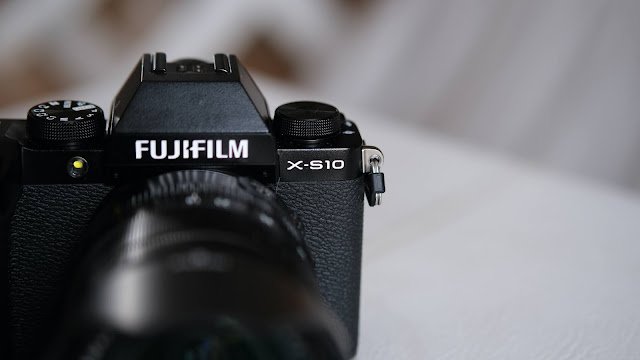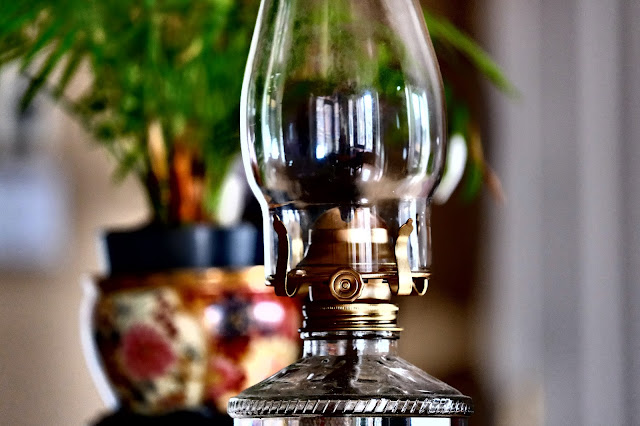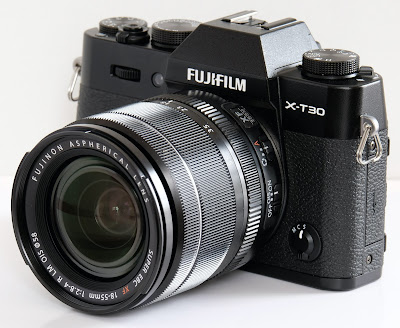Controversy is a human sport that have enlightened many moments of its eventful history. Photo gear evolution is certainly proving it. With the digitalization of the picture taking process, photo equipment manufacturers have applied an array of different configuration for their camera models but at the end we can categorize them in two classes of devices: the fully electronic oriented ones with controls, dials and multi- functions buttons partly or entirely reconfigurable and the ones that privilege a more ancient analogically presentation with the basic photographic parameters such as lens aperture, shutter speeds or ISO sensibility setting.
The Fujifilm color (and B&W) science.Since many years Fujifilm has been rightfully renowned for its skill in producing excellent traditional analog-film products and then a very interesting digital color palettes that are replicating the film ones. This may be one of the major reasons why people are choosing to work with Fujifilm devices and staid very loyal to the Japanese manufacturer. For one, I have found on many occasions that the Fujifilm rendering correspond to my own taste without too many post-edited interventions.
The importance of the picture rendering may have been seen as trivial, but many photographers have a tendency to forget it in profit of others ergo-material factors to justify their specific choices of photo equipment. It is also true to say that it is a matter of personal taste and involvement especially for the post treatment of the picture file.
From X-T10 to X-S10.We can draw certain analogies between the introduction of the original Fuji X-T10 model and this new X-S10. The two models are simpler version of the more sophisticated Fuji models. Handling of them can be set to a fully "Auto" mode to escape any concern about setting on the spot the camera. The spartan design of the two models is also a basic characteristic that many photographers will appreciate. The two major differences between the X-T10/20/30 and the XS10 are the ergonomics and the way the command interface is working. If you compare the internal abilities of the X-T30 (Third itineration of the original X-T10) with the X-S10, you will deduct that they perform on the equal level except for the presence of the in-camera sensor stabilization system (IBIS) on the latter.
Continuity through the Fujifilm X-series is rightly preserved (except for the new battery pack present on the X-T4 model) by the interchangeability of the accessories such as the battery packs (NP-W126S), the external flash models, the memory cards (SD) and obviously the lens mount. *
The IBIS necessity. Although some photographers disregard the virtue on an IBIS feature on many modern digital camera models, the advantage of a stabilization system in photography cannot be denied. In short it reduces significantly the blur induced by involuntary movements of the photographer. Many Fujinon XF prime lenses don't have an optical image stabilization (OIS) optionality and the camera IBIS solve perfectly that absence.
The experience with the professionally oriented Fujifilm X-H1 model have clearly demonstrate the strong appeal to get a camera sensor stabilization feature. Fuji offer has been extended to the newest X-T4 and X-S10 models and we can forecast easily that it will be the case for more upcoming ones (with the exception of the new X-E4). At the question if you are really needed to use a camera model with IBIS, there is no definite answer. For the occasional or more productive videographer, it can be a winning factor. For still photographers, we cannot really say because it depends how and under which situations you are taking pictures. But for a frequent user in low light context, IBIS can be a remarkable help.
Moreover, on that stabilization debate is the choice of lenses selected by the photographer. Some special zoom models are already dotted with an optical image stabilization system (OIS) that will suit the usual photo projects. At this point, you have to analyze your needs and the entire photo equipment (camera + lenses) abilities.
About the "analog" control dials.Knowing what your basic setting are (ISO, shutter speed, aperture) without looking inside your viewfinder has been always a great advantage. To do this on the Fujifilm X-S10 will require to look at your back screen providing it has been correctly positioning for viewing and activated which is not a real optimal solution. This why an LCD control screen à la X-H1 model would has been appreciated in that case. The omitting on the informative written marks on the control dials will certainly be an annoyance for the users of the previous Fujifilm X-Mount camera models. Accordingly, many reviewers have classified the Fujifilm X-S10 as "middle of the range" camera model opposed to the more pro-oriented ones such as the past X-H1 and the actual X-T4.

Pre-setting a camera and its lens has been a photographer reflex for many decades and in particular into more active or action photographic situations. As a matter of efficiency, the photo taker doesn't have to bring the camera in its viewing position to perform some basic adjustments of important parameters like shutter speed, lens aperture or even sensor sensibility (ISO). Unless consulting an activated back viewing screen properly configured and positioned, the Fujifilm X-S10 cannot compete with the X-T4 model for example but you must remember that a last moment adjustment can be done just before the picture will be taking with the help of the viewfinder info or with the Live view back screen info.
The hand grip vs the more compact camera requirement.Here may be the most controversial factor for some who want the smallest package possible for their APS-C camera and Fujifilm have succeeded to offer various models that were fulfilling that specific requirement, especially with their X-E model series and, already, a new version (X-E4) has been introduced by the Fujifilm. So, the pressure to get a downsized design for the Fujifilm X-S10 could have been less present that is use to be in the recent past.
The "new" X-S10 hand grip is certainly an implicit homage to many MFT compact models from Olympus and Panasonic with the location of the two major control dials in front and back of the X-S10. The grip serves as the battery pack and memory card compartment. As a right-handed photographer myself, the camera prehension is very natural as for the location of the shutter release button surrounded by the easy on/off switch.
Articulated (back) viewing screen
Getting a fully articulated (side-hinged) back screen on a Fujifilm X-series camera model has been also a repetitive demand from many Fuji users. We have seen in the recent past many others inventive alternative solutions, but it seems that Fujifilm has finally agreed to follow this market trend. Another big advantage to that articulated screen is the possibility to completely reverse it when you don't want to use it and, in doing so, it offers a better screen surface protection.
XF and XC Fujinon lenses.One of the strong points of the Fujifilm X-series is the extended range of different lenses offered by the manufacturer. As we speak today, there are more than thirty different optics available that are part of the active list of Fujinon lenses. Although there are notorious replications and older designs, it will be dishonest to pretend that the Fujifilm X- mount offer isn't a real advantage. And most of them are above average optically quality performers.
Over the years Fujifilm have introduced some XC Fujinon lenses for the benefit of a lower selling price mainly to fit with their entry-level camera models. XC optics have no aperture ring provision and are made of lighter material such as polycarbonate but optically seem to be on the same level than their counterpart of the XF series. Again, the absence of the aperture control ring can be annoying for the preset photographer adepts. For others, it won't make a big difference since they can rely on the control dial of the Fujifilm X-S10 model.
A new departure for the Fujifilm X-Mount series.Can the new Fujifilm X-S10 model be the sign of a new trend of the products offered by them? That is the big question regarding the future of the many different lines of photo devices developed over the years by Fujifilm headquarters. But some answers should be easier to anticipate. The X-T series have already a new model (X-T4) with IBIS. If Fuji decide to market a X-H1 successor, that feature which was already present on the X-H1 will certainly be repeated. Fujifilm have finally announced the new X-E4 (No IBIS) which is confirming the pursuit of the X-E series. So, it is obvious that Fujifilm will maintain most of its line-up at least for the next few years. However, on a long run, things could be much more uncertain. If the X-S series is a good market success, it could indicate to Fujifilm a new road to follow especially for the basic and simpler models of the future. Less pseudo-analogic features mean more economical products to manufacture and better interchangeability of the internal pieces used to produce them. This cannot be ignored in a future equation to salvage a camera manufacturer.
Built quality and size proportion.Fujifilm X-S10 is a larger (in size) camera compare to the X-T30/20/10 models for example. Most of this can be attributed to its bigger hand grip. This difference will be more manifest when you couple the X-S10 model with a more compact lens such as many of the prime fix focal F2/2.8 lenses. The same remark can be applied for a combination camera body/lens with the small XC 15-45mm standard zoom lens. But its larger dimensions improve noticeably the secure handling feeling in particular when you are choosing bigger sized lenses. At this point the compact factor is less a priority to the photographer.
The built quality of the Fujifilm X-S10 body is announced as par as the other Fuji X-series models and certainly at least of the same level as the X-T30/20/10 series.
Same electronic viewfinder again.One point that is definitively less impressive from the Fujifilm X-S10 is the replication of the electronic viewfinder (EVF) specifications of the previous X-T30/20 models. The comparison with the EVF found on the X-T4 and X-H1 can be frustrating for a mirrorless camera user that is always anticipate improvement from that specific part from the more evolutive and recent models. I am not saying that the X-S10 viewfinder is not a competent tool but as for the image sensor is a fundamental part of a digital camera, its EVF represent the evaluating looking tool in the field. We could say the same about the LCD back screen monitor except for its ability to be fully articulated.
Please take note that the X-S10 video applications and performances are not reviewed in this post.
Personal user notes about the Fujifilm X-S10This is not by chance that the different Fujifilm X-mount camera models that I have been used for the recent years are the most productive ones. This relation with the photographic creative motivation has started right from the initial Fujifilm image science of the film-analog era. Yes, we always appreciate a good ergonomic design alongside an easy comprehensive configuring interface. But the end picture results are paramount to most photographers that privilege photography over ... technology!

Utilitarian camera designs have always attracted me for the simplicity of using them without the confusion of too much control dials and pushbuttons that are difficult to memorize (without saying to activate them accidentally). The Fujifilm X-S10 L-shaped boxy body design evoke inevitably the minimalism right from the Bauhaus perspective. Simple, effective, durable. And it is a compact camera, don't be confused by its virtual aspect presented over the Web. On hand, it is a smaller package than you might have anticipated (the same remark can be said regarding the Fuji X-T30 model).
A good step in the right direction has been done by Fujifilm with the introduction of the X-H1 model in 2018. It was a first model part of the Fujifilm X-mount series that have an In-Body-Image(sensor)-Stabilization provision (IBIS) and the system have shown very promising performances. However, the bulky size of the X-H1 camera body wasn’t really appreciated by the compact camera lovers. Two years later (2020), Fujifilm extended its offer with the X-S10 after the X-T4 model entering. Clearly, in-camera-image-stabilization is becoming a standard feature for Fujifilm X-mount models (with the exception of the new X-E4).
Even if many reviewers like to surname the Fujifilm X-S10 as a « mini » X-H1, this is not really the case **. The X-S10 is not classified as a weather resistant camera and its use ability in term of durability or intensity cannot qualified as a professional photo device although it can surely deliver picture results of the same level or even superior of the pro X-H1 which is issued from a previous technically generation.
The electronic viewfinder (EVF) of the Fujifilm X-S10 is similar of the one seen on the X-T30 and other Fuji X-mount models with a moderate eye relief which is not perfect for eyeglass wearers (like me!). All-important information in regard of the Fujifilm configuration is clearly illustrated on the EVF and are rotating to be adapted to vertical or horizontal photo shooting. The fully articulated LCD screen is handy for many different photo taking contexts and can be completely reverse if not in use (A nice feature that prevent the frenetic habit to review each picture taken and allow a better photo taking concentration).
Superior JPEG picture results.If you are mainly a JPEG picture file user, the Fujifilm camera models should be very high on your considering list of camera model options. I cannot emphasize more the big advantage of selecting Fuji film simulations in particular if you have been film-analog educated in photography. Moreover, those simulations reflect all the Fujifilm past experiences during the analog days which were widely renowned all over the photographic world.
If you are establishing a short comparison between the APS-C and the Micro Four Third (MFT) image sensor formats, the first ones are producing outstanding JPEGs that you can easily manage more severe cropping without losing too much overall picture quality. Despite the fact that the Fujinon APS-C lenses are generally heavier than their MFT counterparts, the final results are greatly compensating the added efforts (which stay far less from the so-call "full frame" format camera models).
You have to remember that quality doesn't replace creativity, but it gives you a more confident approach in producing your different photographic works. Will the Fujifilm APS-C image sensor performances be sufficient for your expectations? That is a very personal question based on your own specific needs.
Excellent optic Fujinon X-mount offer.Fujifilm X-mount series lenses is a complete optical system that is offering many types of prime and zoom lenses. It is by far the most complete entirely dedicated APS-C format lens system, no contest. And most of these optics are high level performers. The choice is yours to select a lens that will suit your special need or your personal vision.
Some may ask what would be a good starting prime or zoom lens for the Fujifilm X-S10? There is no universal answer good for everybody at the same time. But, taking my example, I would have a tendency to prefer a prime lens like the XF 23mm F2 WR or the XF 27mm F2.8 WR or, for a zoom, the XF 18-55mm F2.8-4 OIS (more compact than the XF 16-80mm that better suit the larger X-T4 for example) but all these options are very personal and are based on my own photographic vision.
Another suggestion is to look for a more weight equilibrated camera body-lens combination. Often the big pro-optics are designed with the larger pro camera bodies in mind and coupling them to more compact models may insecure the holding of your complete photo device. Some very big telephoto Fujinon prime or zoom lenses*** are equipped with a tripod accessory ring (on the lens barrel) that prevent a stressing abuse of the tripod mount on the camera body and offer a much more balance of the camera body-lens, a combination which facilitate the follow-up of the main subject.
To briefly conclude...The good and the bad, the love or the hate, the perfect or the unperfect, are eternal debate over the Web planet regarding any kind of devices designed for a human use. Designers and manufacturers are making choices often that are abstracting any exterior advice or general contentment. Is the Fujifilm X-S10 a reliable, competent and ergonomic camera model for photographers? Without any doubt although preferences cannot be the same for all. Fujifilm offers an array of different camera models that should to a certain extend respond to most photo enthusiasm and professional needs. But they have also their own design signature as for other manufacturer camera lines.
As an early Fujifilm X-mount user, I was surprised by the new departure of the X-S10 in terms of interface compare to all their previous models. Flexibility and competence are still there but rearranged in a different way (P-S-A-M mode dial) and visual off-camera presetting**** have disappear which can be annoying for many intuitive photographers. So, I have been a bit puzzled to comprehend if it is a good or bad evolution.
The presence of the IBIS is, for its part, a definitive improvement over the X-T30 model to name one. Stabilization is a key feature for the outgoing photographer. Eventually it is clear that IBIS will be implanted to almost camera models. The Fuji X-T4 (and previous X-H1) has summarized the two approaches (IBIS + classic pre-set presentation) in a larger camera body package but hope can be expected for a new X-T40 (with IBIS) that will offer the same in a smaller camera body. All that said and anticipated, the Fujifilm X-S10 is the only Fuji X-mount compact of its kind into the Fujifilm line-up and it can already fulfill many photographers demands.
* Missing parts? For the more recent X-mount recent models, Fujifilm have decided to not furnish an external battery charger (BC-W126S) which is very annoying for multi-battery users and it is creating a kind of discrimination between new and old owners of Fuji X-mount cameras.
** No optional vertical power grip is available. It is not particularly surprising but it would have been nice considering the body design of the Fujifilm X-S10.
*** XF40-150mm F2.8 OIS; XF100-400mm F4.5-5.6 OIS; XF200mm F2 OIS
**** You can recover at least the f-stop ring operability on the lens if you are using the mode A.













































